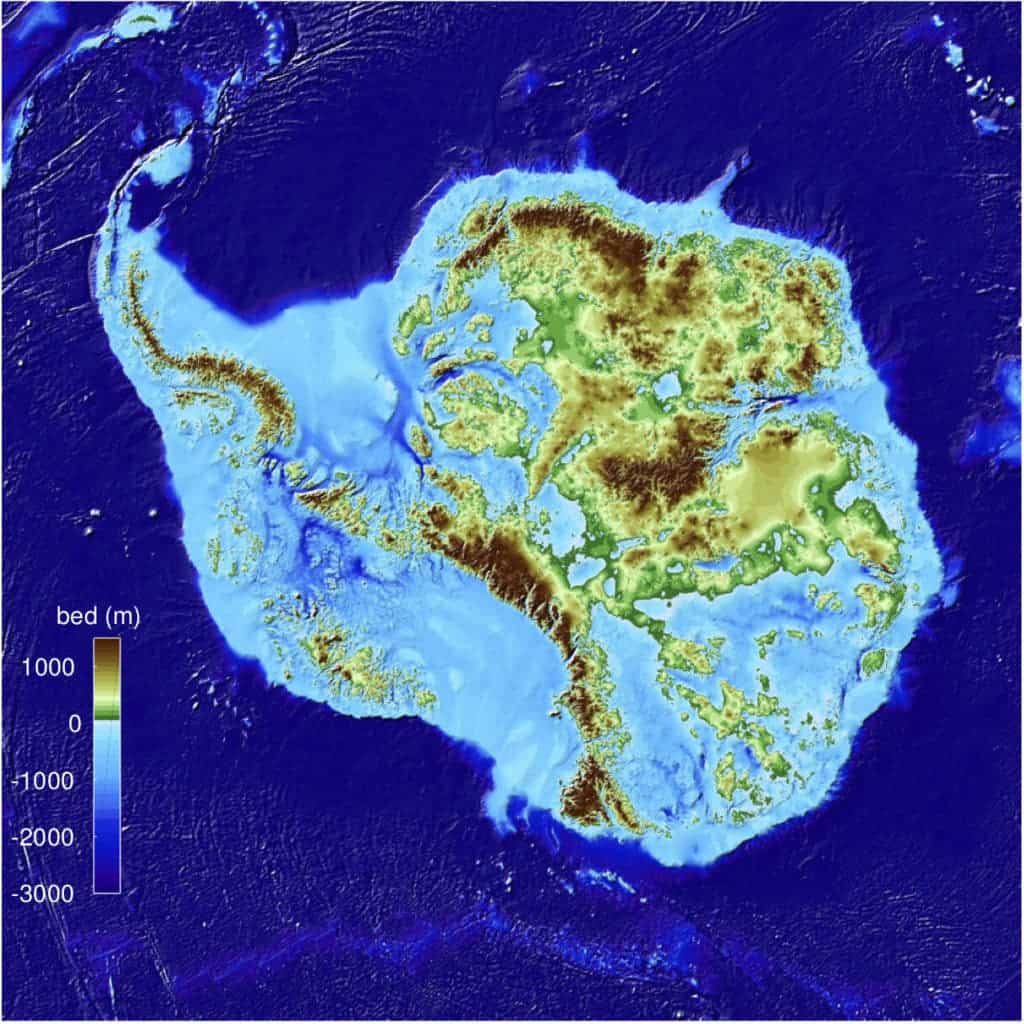Scientists have known for years that Denman Glacier, a very large glacier in East Antarctica, has a trough beneath it, but they had no idea just how deep it was until glaciologists at the University of California, Irvine, mapped the region. According to this recently compiled a sophisticated map of the icy continent, this trench is actually two miles (3.5 kilometers) below sea level, which practically makes it the deepest point in the world.

Mathiew Morlighem, the lead author of the new study and an Associate Professor of Earth System Science at UC Irvine, says work on the recent topography map of Antarctica, known as BedMachine, started years ago almost by accident.
Morlighem and colleagues at NASA were designing models of ice sheets when they noticed that their simulations contradicted reality in some key aspects. For instance, some glaciers that were known to lose mass were suddenly gaining mass according to their models. Upon investigating, they found that it wasn’t bad math or the model’s resolution to blame, but rather the shape of the bed.
This led to the realization that if they were to design accurate ice sheet models, the scientists had to have better maps of the bed beneath.
Bedmachine is the crowning achievement of this effort, which involved 19 research organizations. Antarctica’s topography was mapped using radar and satellite images spanning over 40 years.
“There were lots of surprises around the continent, especially in regions that had not been previously mapped in great detail with radar,” said Morlighem in a statement. “Ultimately, BedMachine Antarctica presents a mixed picture: Ice streams in some areas are relatively well-protected by their underlying ground features, while others on retrograde beds are shown to be more at risk from potential marine ice sheet instability.”
The new map showed previously unknown features of land hidden beneath the ice, including pronounced ridges across the throughs that feed the Ross ice shelf — the largest ice shelf in Antarctica. One particular trench, the Denman trough, was found to measured 3.5 kilometers (2.17 miles) below sea level, making it the deepest continental point on Earth. The Earth’s deepest point is the Challenger Deep in the Mariana Trench, which stretches almost seven miles below sea level.
“Older maps suggested a shallower canyon, but that wasn’t possible; something was missing,” Morlighem said. “With conservation of mass, by combining existing radar survey and ice motion data, we know how much ice fills the canyon—which, by our calculations, is 3,500 meters below sea level, the deepest point on land. Since it’s relatively narrow, it has to be deep to allow that much ice mass to reach the coast.”
Troughs, as well as fjords, are commonly found in glacial landscapes. They’re formed by glaciers, which carve the bed when they cycle between advance and retreat. Over thousands of years, very deep valleys can be carved in the bed. Denman trough, for instance, is 62 miles long and 12.4 miles wide.
Besides setting a new milestone, BedMachine could help climate scientists improve their forest of how Antarctica will respond to climate heating in the future.
The study appeared in the journal Nature Geoscience.









